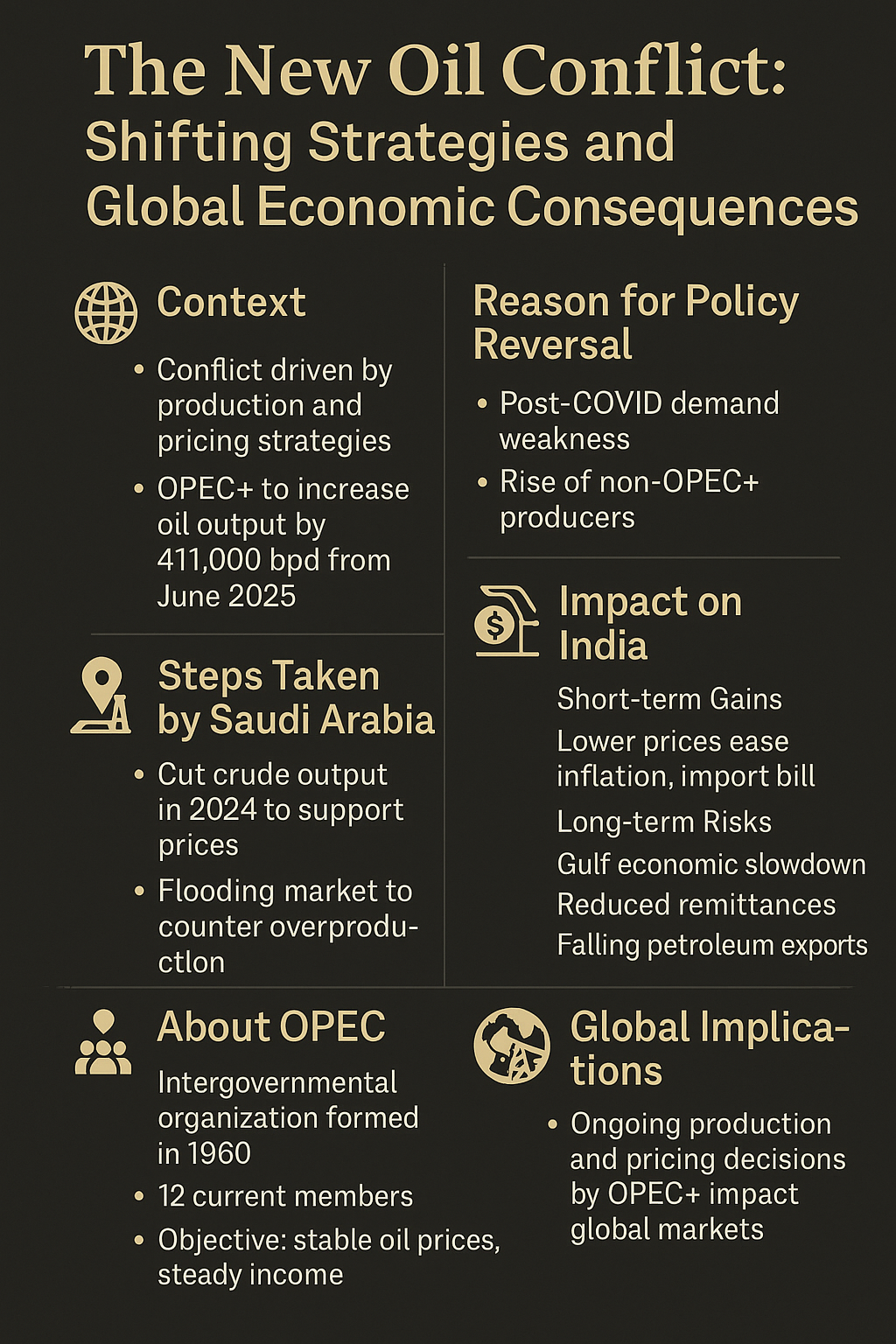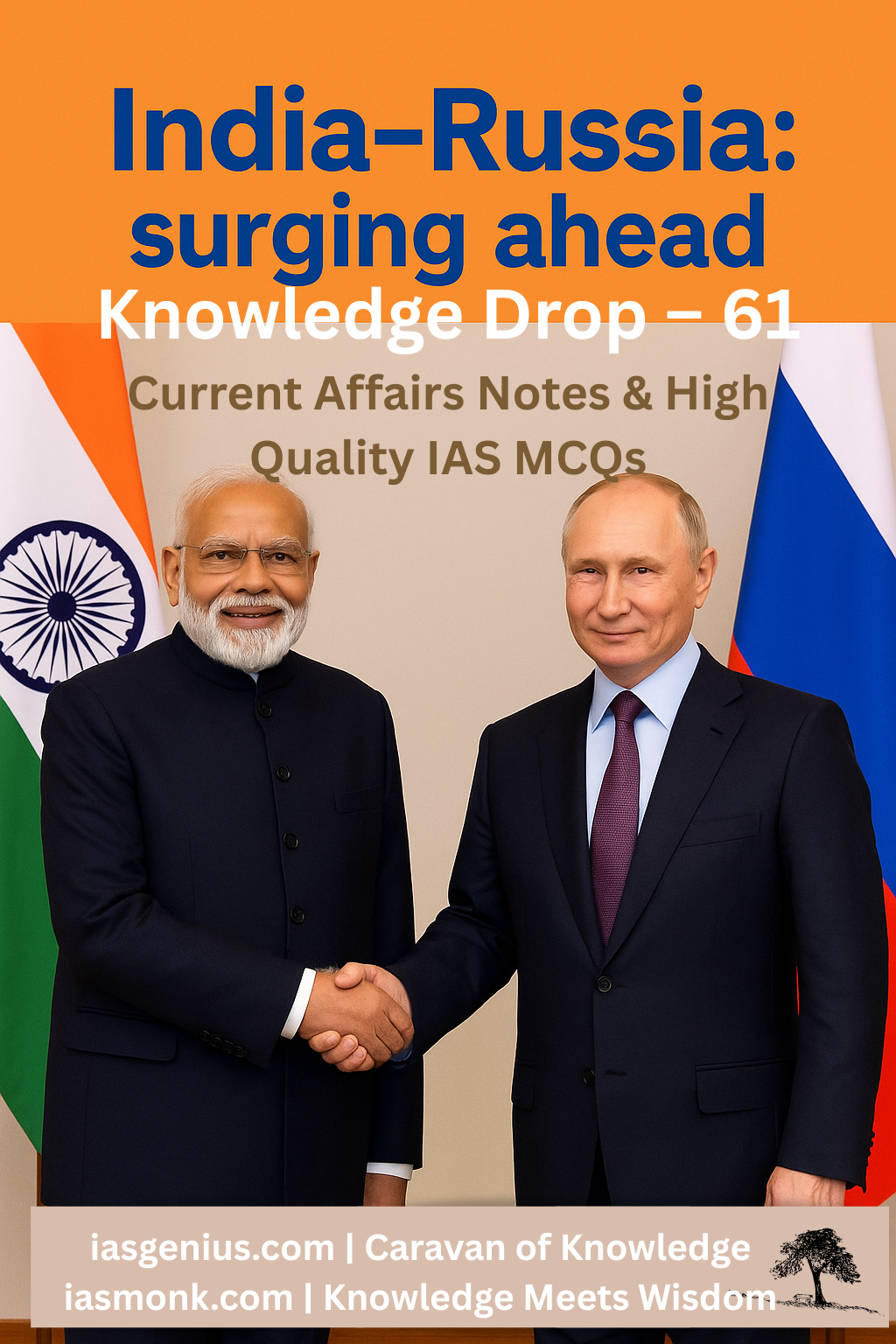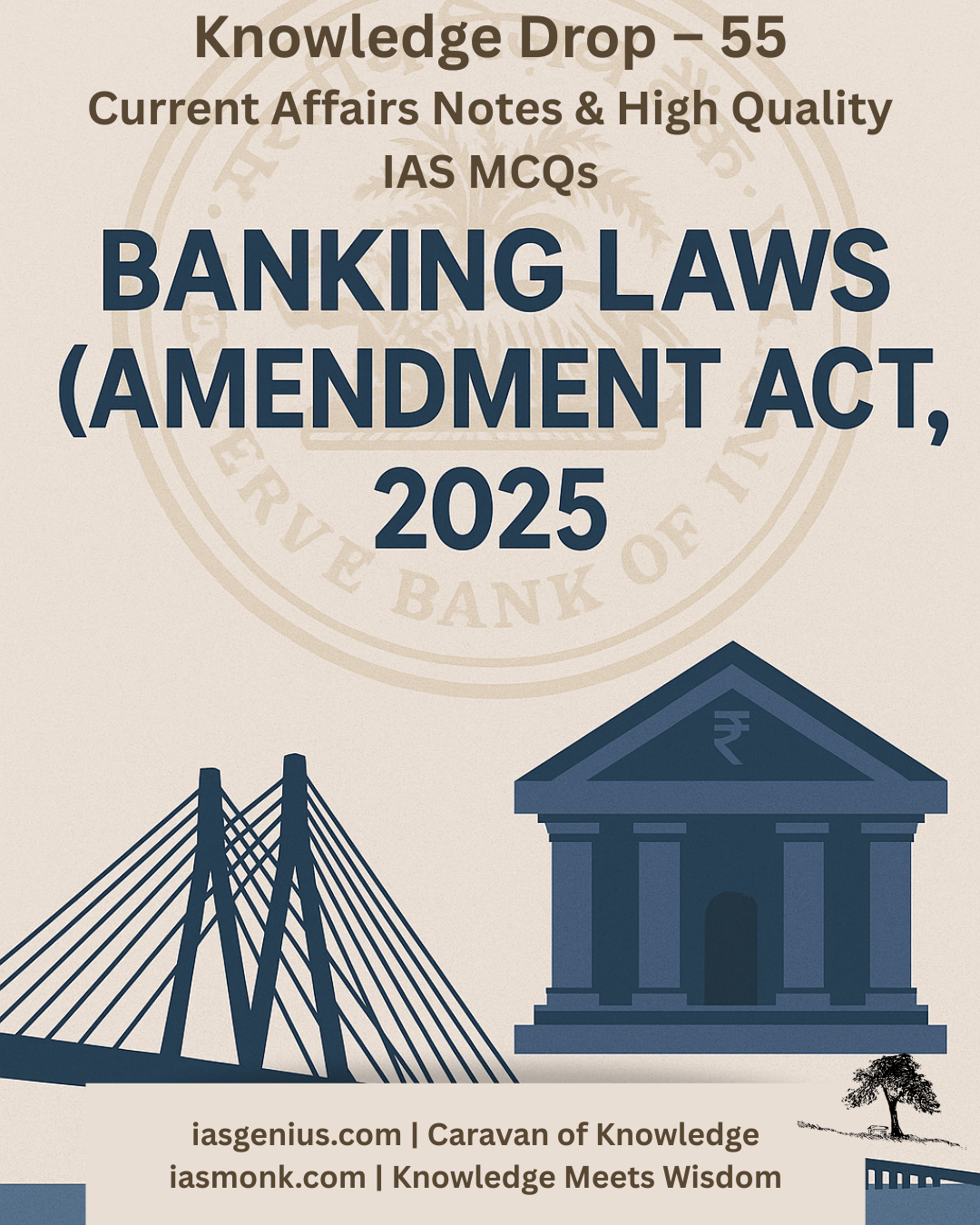
🧭May 25, 2025, Post 1: The New Oil Conflict: Shifting Strategies and Global Economic Consequences 🌍🛢️ | High Quality Mains Essay | Prelims MCQs
The New Oil Conflict: Shifting Strategies and Global Economic Consequences 🌍🛢️
Post Date : May 25, 2025
Syllabus: GS3/Economy

Context
A new oil conflict is emerging, one fought not with armed forces but through production and pricing strategies. The stakes are high, and the consequences for the global economy are far-reaching. Recently, OPEC+ made the decision to increase crude oil output by 411,000 barrels per day (bpd) starting in June 2025. This marks the third consecutive month of production increases, signaling a significant shift in market dynamics. As Brent crude prices plummeted in response, the volatility of the global oil market became apparent. This “oil war” is taking place in boardrooms rather than battlefields, yet its consequences are just as impactful.
Background
OPEC+ had previously cut oil production in 2023 by 2.2 million bpd to stabilize prices. However, in a policy reversal, OPEC+ decided to increase production in response to falling prices. This strategy has caused Brent crude prices to drop sharply, underlining how sensitive the oil market remains to changes in supply. The ongoing shift highlights just how fragile the global energy market is in the face of new strategies and increased competition.
Steps Taken by Saudi Arabia
Saudi Arabia, a key member of OPEC+, played a central role in reducing production in 2024 to its lowest levels in 13 years—below 9 million bpd. This drastic step aimed to prop up falling oil prices. However, with non-compliance from some OPEC+ members like Iraq, Kazakhstan, UAE, and Nigeria, Saudi Arabia is now countering overproduction by flooding the market. This aggressive “flooding strategy” is a tactic seen in previous oil wars, designed to assert control over global oil supply.
Reason for Policy Reversal
Several critical factors have led to this shift in policy:
- Post-COVID Demand Weakness 🦠📉: The recovery post-COVID has been uneven and fragile, with oil demand stagnating in many parts of the world.
- Rise of Non-OPEC+ Producers 🌍🛢️: Countries like Brazil and Guyana, along with U.S. shale oil producers, have rapidly expanded production, flooding the market with cheap oil, thus contributing to a global supply glut.
Reasons for Decrease in Oil Prices
Multiple forces are driving oil prices downward:
- Oversupplied Market 📉: Despite weak demand, numerous countries continue to increase supply, exacerbating the downward pressure on oil prices.
- Peak Oil Demand Theory 🌍⛽: The International Energy Agency (IEA) projects that global oil demand may plateau or even decline by the end of the decade, as major economies shift towards alternative energy sources.
- Energy Transition ⚡🌱: The global push toward electric vehicles and renewable energy is reducing reliance on fossil fuels, especially in major markets like China and Europe. This transition further weakens the long-term prospects for oil prices.
Impact on India
India, one of the largest oil importers globally, feels the fluctuating prices keenly.
- Short-term Gains 💰: A $1 decrease in crude oil prices translates into $1.5 billion in savings annually for India. This reduction helps ease inflation and lowers the import bill, benefiting India’s current account balance.
- Long-term Risks ⏳: While low prices offer immediate relief, long-term risks could arise:
- Economic slowdown in Gulf countries 🏝️: Many Gulf countries, vital trade and investment partners for India, rely on oil revenues. Prolonged low prices could slow these economies, threatening job losses for Indian expatriates and reducing the $50 billion in annual remittances.
- Impact on petroleum exports 🚢: India’s refined petroleum exports, among the top in its export basket, could face a downturn due to falling global prices for oil products.
- Reduced investments 💵: Slowing oil revenues might mean a decline in investment from sovereign wealth funds from Gulf nations, potentially stalling infrastructure projects and energy ventures in India.
About OPEC
The Organization of the Petroleum Exporting Countries (OPEC) was founded in 1960 and currently has 12 members: Algeria, Congo, Equatorial Guinea, Gabon, Iran, Iraq, Kuwait, Libya, Nigeria, Saudi Arabia, the UAE, and Venezuela.
- Objective: OPEC’s mission is to coordinate policies to ensure stable oil prices and secure a steady income for oil-producing countries. Headquartered in Vienna, it remains one of the world’s most powerful energy organizations.
OPEC+
Formed in 2016, OPEC+ includes 22 countries, consisting of OPEC’s 12 members and 10 non-OPEC countries like Russia and Mexico. The alliance was created to coordinate and manage global oil production to avoid destabilizing the market. This cooperation has had a profound influence on the direction of the global oil market.
Global Implications
The conflict unfolding within OPEC+ is a battle of economic power that will have significant consequences for global markets. As oil prices fluctuate and production decisions become more politically motivated, countries will increasingly find themselves at the mercy of strategic production cuts and market flooding. The effects will be felt far beyond the oil-producing nations, impacting economies and industries around the world.
GS Paper Mapping
- GS 3: Economy, Energy Security, and Global Oil Markets
- GS 2: Governance and Public Policy (OPEC+ and oil production strategies)
IAS Monk’s Whisper
“In the vast sea of oil and economics, we often forget that it is not the wars fought with weapons but those fought with resources that shape the future. The ebb and flow of oil is a reminder that control over resources is the true power of the modern world. As nations battle over supply and pricing, let us remember the fragility of this balance and the long-term consequences of decisions made today.” 🌍🛢️
High Quality Mains Essay For Practice :
Word Limit 1000-1200
The New Oil Conflict: Shifting Strategies and Global Economic Consequences
Introduction
The global oil market has always been a dynamic and sensitive arena, with fluctuations in supply, demand, and pricing profoundly affecting economies worldwide. However, a new form of conflict is emerging in the oil industry—not through the barrel of a gun, but through shifts in production levels, pricing strategies, and market control. The latest chapter of this conflict is being written by the decisions made within the OPEC+ alliance, which now plays a pivotal role in determining the direction of global oil prices. This essay will explore the ongoing oil conflict, examining the strategies of major players like Saudi Arabia, the rise of non-OPEC+ producers, and the broader economic implications of these developments for countries such as India.
Background of the Conflict
In 2023, OPEC+ (an alliance of 23 oil-producing countries including OPEC members and other major producers like Russia) made the decision to cut oil production by 2.2 million barrels per day (bpd) in an effort to stabilize prices amid the uncertainty caused by the COVID-19 pandemic. The goal was to support falling prices by reducing supply, thus creating a market balance. However, this strategy has recently faced a sharp reversal. In June 2025, OPEC+ decided to increase production by 411,000 bpd, marking a significant shift in their approach.
The decision to ramp up oil output comes after months of increasing pressure due to the oversupply of oil in the market, the rise of non-OPEC+ producers like U.S. shale and Brazil, and an ongoing economic recovery that has not restored demand to its pre-pandemic levels. The result has been a sharp decline in Brent crude prices, indicating how easily the oil market can be destabilized by changes in production policies.
Steps Taken by Saudi Arabia
Saudi Arabia, a key player in the OPEC+ alliance, significantly reduced its crude oil output in 2024, bringing its production levels to the lowest point since 2011—below 9 million bpd. This move was intended to support the declining oil prices in the global market. However, despite these cuts, some OPEC+ members like Iraq, Kazakhstan, UAE, and Nigeria failed to comply fully with production limits. In response, Saudi Arabia has adopted a more aggressive strategy—flooding the market with oil to push prices down and counter the overproduction from non-compliant members.
This approach echoes the strategy Saudi Arabia used during previous oil wars, when it sought to assert dominance in the market by ramping up supply in the face of non-compliance. The recent move is designed to remind other producers of Saudi Arabia’s control over global supply, reinforcing its position as a leader within OPEC+ and as a key influencer of global oil pricing.
Factors Behind the Policy Reversal
Several factors have contributed to the reversal in Saudi Arabia’s oil policy and the shift in OPEC+ strategy:
- Post-COVID Demand Weakness: The economic recovery following the COVID-19 pandemic has been uneven, often described as a K-shaped recovery, where certain sectors have recovered rapidly while others, particularly the energy sector, have struggled to regain their pre-pandemic levels. This weak demand for oil has caused prices to stagnate and prompted OPEC+ to change its strategy to address supply-side challenges.
- Rise of Non-OPEC+ Producers: Countries outside OPEC+, particularly U.S. shale producers, Brazil, and Guyana, have expanded production in an effort to capture market share. These non-OPEC+ producers have added significant volumes to the global supply, contributing to a global glut of oil. As a result, OPEC+ finds itself in a position where it must adjust its production levels to remain competitive.
- Peak Oil Demand Theory: The International Energy Agency (IEA) projects that global oil demand may plateau or even decline by the end of this decade due to the global shift towards renewable energy and electric vehicles. This long-term trend is weakening the outlook for oil prices, prompting OPEC+ members to adapt their strategies to address future challenges.
Reasons for Decrease in Oil Prices
Several factors contribute to the downward pressure on oil prices:
- Oversupplied Market: Despite stagnating demand, producers continue to increase supply, adding to the global glut. With countries like the U.S. and Brazil ramping up production, the supply-side surplus continues to depress prices.
- Energy Transition: The world is moving away from fossil fuels toward renewable energy sources like wind, solar, and nuclear power. As nations like China and Europe invest heavily in electric vehicles and energy efficiency, the demand for oil is expected to plateau or decline over the next few decades. This transition undermines the long-term viability of the oil market, exerting downward pressure on prices.
- Peak Oil Demand Theory: The IEA suggests that the era of increasing oil demand may be nearing its end. As the global economy shifts toward cleaner energy, the demand for oil may level off, reducing the long-term price outlook for crude oil.
Impact on India
India, as one of the largest oil importers globally, is particularly sensitive to fluctuations in oil prices. The short-term benefits of lower oil prices are clear:
- Short-term Gains: A $1 decrease in crude oil prices leads to $1.5 billion in savings for India annually. This directly eases inflationary pressures and reduces the country’s oil import bill, which helps improve India’s current account balance.
- Long-term Risks: While low prices are beneficial in the short run, there are substantial long-term risks to India’s economy:
- Economic slowdown in the Gulf: Many Gulf countries, key trading partners for India, depend on oil revenues. Prolonged low oil prices could slow down their economies, leading to job losses among the 9 million Indian expatriates living in these countries and a potential decline in remittances (which amount to $50 billion annually).
- Impact on Petroleum Exports: India is one of the largest exporters of refined petroleum products. Lower global oil product prices could hurt these exports, which form a substantial part of India’s export basket.
- Reduced Sovereign Investments: The wealth funds of oil-rich nations like Saudi Arabia and UAE play a crucial role in financing infrastructure projects in India. A slowdown in these funds could delay key energy and infrastructure projects.
OPEC and OPEC+
The Organization of the Petroleum Exporting Countries (OPEC), established in 1960, has long been a central player in managing the global oil market. The current membership of OPEC consists of 12 countries, including Saudi Arabia, Iraq, and Nigeria. OPEC aims to regulate oil production to ensure fair prices and a steady income for oil-producing countries.
In 2016, OPEC formed the OPEC+ alliance, which added 10 non-OPEC countries like Russia and Mexico. The creation of OPEC+ allowed for better coordination between major oil producers and gave OPEC countries more leverage over the global oil market.
Global Implications
The battle for control over oil production is not only a matter of economics but also geopolitics. OPEC+’s decisions are influencing global oil pricing strategies, creating global economic ripple effects. Nations that rely heavily on oil exports to fund government programs and investments, like the Gulf countries, are facing increasing pressures. The strategy of production cuts and increases, alongside the shifting demand for oil, is reshaping the balance of power in the global oil market.
Conclusion
The global oil market is undergoing a dramatic shift as OPEC+ and non-OPEC producers wrestle for control over supply and pricing. For India, this means navigating both short-term benefits and long-term risks. While lower oil prices are beneficial in the immediate term, the global transition towards cleaner energy and the volatility of oil prices pose significant risks to India’s economy. The decisions made by oil-producing nations today will shape the future of energy markets and global economic trends for decades to come.
The oil market conflict is a stark reminder of how resource control can dictate not only national economies but also international relations. As oil-producing nations flex their muscles, the global economic landscape continues to evolve, driven by the ongoing battle for market supremacy.
“In the battle for resources, it is not just the quantity that matters, but the strategy that determines the future. As the world shifts towards a more sustainable future, the true power will lie in those who can balance growth with responsibility, and market control with global cooperation.” 🌍🛢️
Target IAS-26: Daily MCQs :
📌 Prelims Practice MCQs
Topic: The New Oil Conflict
MCQ 1 – Type 1: How many of the above statements are correct?
Consider the following statements regarding the new oil conflict:
1. OPEC+ has decided to increase oil output by 411,000 barrels per day starting June 2025.
2. Saudi Arabia reduced its oil output in 2024 to its lowest levels since 2011 to support oil prices.
3. The rise of non-OPEC+ producers like Brazil and U.S. shale oil has contributed to the supply glut.
4. OPEC’s strategy to increase production aims to stabilize global oil prices in the long term.
How many of the above statements are correct?
A) Only one
B) Only two
C) Only three
D) All four
🌀 Didn’t get it? Click here (▸) for the Correct Answer & Explanation
✅ Correct Answer: B) Only two
🧠 Explanation:
• 1) ✅ True – OPEC+ did decide to increase oil output by 411,000 bpd starting June 2025.
• 2) ✅ True – Saudi Arabia significantly reduced its crude oil output in 2024 to stabilize prices, marking the lowest levels since 2011.
• 3) ❌ False – While non-OPEC+ producers like Brazil and U.S. shale oil have expanded production, OPEC’s move to increase output is more a reaction to oversupply rather than a long-term stabilization strategy.
• 4) ❌ False – OPEC’s strategy to increase production is largely driven by the need to counter the oversupply situation, not necessarily to stabilize prices in the long term.
MCQ 2 – Type 2: Two-Statement Type
Consider the following two statements:
1. Saudi Arabia has responded to the non-compliance of OPEC+ members by flooding the market with oil.
2. The rise of electric vehicles and renewable energy is expected to reduce global oil demand, thereby stabilizing oil prices.
Which of the above statements is/are correct?
A) Only 1 is correct
B) Only 2 is correct
C) Both are correct
D) Neither is correct
🌀 Didn’t get it? Click here (▸) for the Correct Answer & Explanation
✅ Correct Answer: A) Only 1 is correct
🧠 Explanation:
• 1) ✅ True – Saudi Arabia’s response to non-compliance by other OPEC+ members has been to flood the market with oil, a tactic used in previous oil wars to assert control.
• 2) ❌ False – While the rise of electric vehicles and renewable energy is expected to reduce long-term oil demand, this does not directly stabilize oil prices in the short term. The shift will contribute to downward pressure on prices, not stabilization.
MCQ 3 – Type 3: Code-Based Correct Statement Selection
Which of the following statements regarding the oil market conflict are correct?
1. OPEC+ has reduced oil production to maintain high global oil prices.
2. Non-OPEC+ producers like the U.S. and Brazil have expanded production, contributing to an oversupply in the market.
3. The International Energy Agency projects that global oil demand will increase steadily for the next decade.
4. The shift towards renewable energy is weakening the long-term prospects of the oil market.
Select the correct code:
A) 1, 2, and 4 only
B) 1, 3, and 4 only
C) 2, 3, and 4 only
D) 1, 2, 3, and 4
🌀 Didn’t get it? Click here (▸) for the Correct Answer & Explanation
✅ Correct Answer: A) 1, 2, and 4 only
🧠 Explanation:
• 1) ✅ True – OPEC+ reduced oil production in 2023 and earlier years to stabilize prices.
• 2) ✅ True – The expansion of production by U.S. shale oil producers and countries like Brazil has led to an oversupply in the global oil market.
• 3) ❌ False – The International Energy Agency (IEA) projects that global oil demand may plateau or even decline towards the end of the decade due to increased adoption of renewable energy and electric vehicles, not a steady increase.
• 4) ✅ True – The global shift towards renewable energy is indeed weakening long-term prospects for the oil market by reducing reliance on fossil fuels.
MCQ 4 – Type 4: Direct factual question
What is the primary objective of the recent decision by OPEC+ to increase oil production?
A) To balance global oil demand and supply and stabilize prices
B) To promote the use of renewable energy
C) To reduce dependence on oil imports in producing countries
D) To flood the market with oil and reduce competitor production
🌀 Didn’t get it? Click here (▸) for the Correct Answer & Explanation.
✅ Correct Answer: A) To balance global oil demand and supply and stabilize prices
🧠 Explanation:
• • The primary goal of OPEC+‘s decision to increase oil production is to balance the supply and demand in the global oil market and stabilize prices that had been negatively affected by oversupply and fluctuating demand.


















